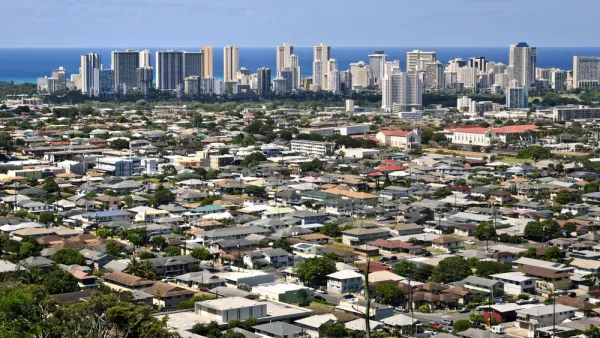Recent studies have called into question the predominant narratives on gentrification. A more precise definition of the term as it works in the United States is required.

Henry Grabar surveys the latest evidence of gentrification and displacement as trends in neighborhoods around the country and notes two dynamics:
All three of those reports bolster the conventional narrative about urban change in America, which is that urban neighborhoods are getting whiter and wealthier, sometimes at the expense of longtime residents. Yet all three emphasize that, statistically, those changes run very much against larger currents of metropolitan change. The most likely story, for most Americans in most cities, is that their neighborhood is getting poorer and less white. There is no city in the country where low-income people are more likely to live in a neighborhood that’s getting richer than one that’s getting poorer.
Grabar is basing that summary on three recently published studies of demographic and neighborhood changes: one by the New York Times, one by the National Community Reinvestment Coalition, and one by the Institute on Metropolitan Opportunity at the University of Minnesota Law School.
The three new studies emphasize the need for us to keep two ideas in our heads at once: Gentrification is real and is sometimes accompanied by displacement. But most neighborhoods are either rich and getting richer, or they are just getting poorer (mostly the second).
Digging into each of the studies for specific geographic examples, and using Beverly Hills as a star example, Grabar builds the case that too many cities claim the specter of gentrification, and it is a major obstacle to land use reforms such as SB 50 in California.
FULL STORY: Gentrification Got Gentrified

National Parks Layoffs Will Cause Communities to Lose Billions
Thousands of essential park workers were laid off this week, just before the busy spring break season.

Retro-silient?: America’s First “Eco-burb,” The Woodlands Turns 50
A master-planned community north of Houston offers lessons on green infrastructure and resilient design, but falls short of its founder’s lofty affordability and walkability goals.

Delivering for America Plan Will Downgrade Mail Service in at Least 49.5 Percent of Zip Codes
Republican and Democrat lawmakers criticize the plan for its disproportionate negative impact on rural communities.

Test News Post 1
This is a summary

Test News Headline 46
Test for the image on the front page.

Balancing Bombs and Butterflies: How the National Guard Protects a Rare Species
The National Guard at Fort Indiantown Gap uses GIS technology and land management strategies to balance military training with conservation efforts, ensuring the survival of the rare eastern regal fritillary butterfly.
Urban Design for Planners 1: Software Tools
This six-course series explores essential urban design concepts using open source software and equips planners with the tools they need to participate fully in the urban design process.
Planning for Universal Design
Learn the tools for implementing Universal Design in planning regulations.
EMC Planning Group, Inc.
Planetizen
Planetizen
Mpact (formerly Rail~Volution)
Great Falls Development Authority, Inc.
HUDs Office of Policy Development and Research
NYU Wagner Graduate School of Public Service





























